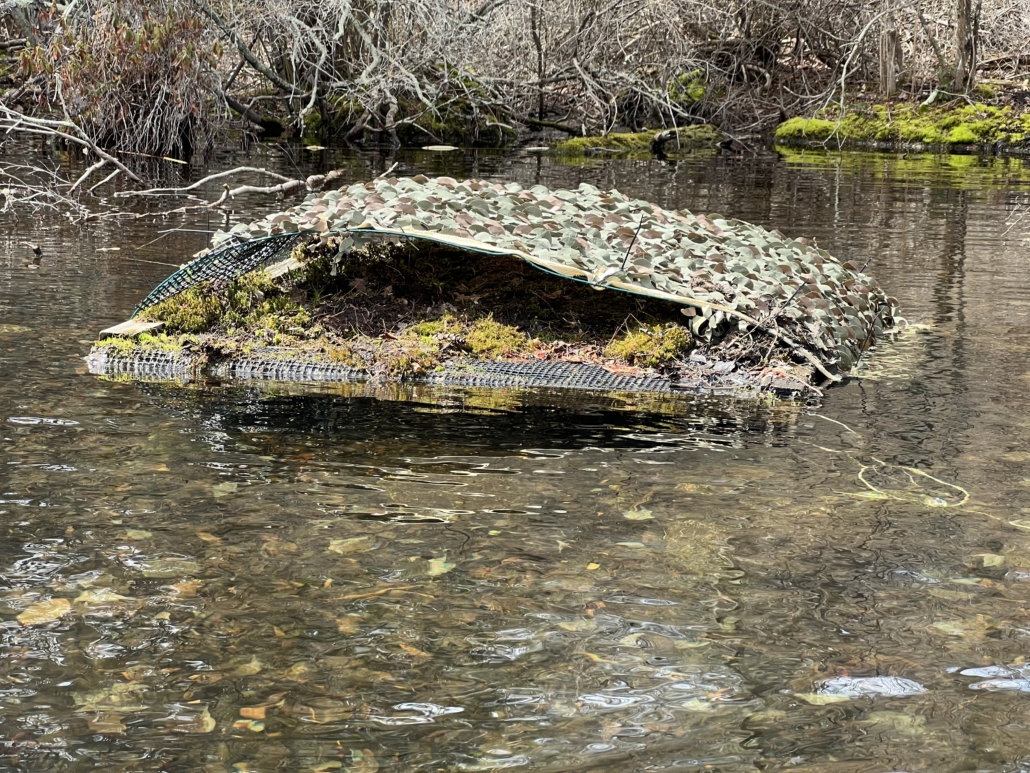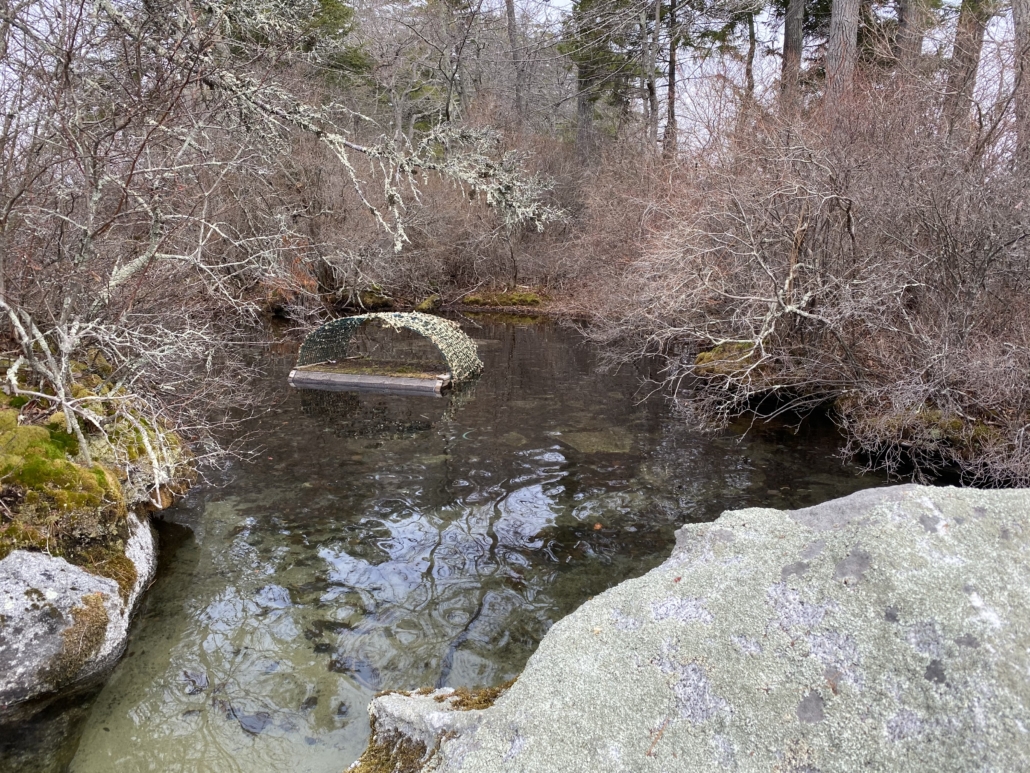Conservation Intern Blog
This summer, Kaila Hodges is working at the Loon Preservation Committee as our Outreach Intern. Be sure to keep checking our blog for her posts, which will describe the work that she and the rest of our field crew members are doing this summer to support New Hampshire’s loons!
Raft Repair: The Best First Day Ever
May 19th marked my first day working at the Loon Preservation Committee. Around noon, Ashley (LPC’s Lake Winnipesaukee biologist) invited me to spend my first day on the job getting a unique experience. We were off to fix a damaged nest raft in a cove about an hour’s boat ride from LPC’s launch. I put on three jackets, two pairs of pants, and a winter hat, but even that wasn’t enough to face the lake’s brutal wind. I was quite cold, but there was no way I’d complain on my first day. About twenty minutes into the ride, Ashley stopped the boat for my first in-person loon sighting. I have never been so excited to use a pair of binoculars! After getting a band sighting on these loons, we continued with our journey to the cove.
If the air was cold, I knew the water must be freezing. This didn’t stop Ashley from wading into the dark, eerie cove to retrieve the damaged raft. She pushed through thigh-deep waters to make her way to the nest raft. Repairing the raft wasn’t a quick job, as she had to stand in the water while drilling in order to re-attach the raft cover, which had come loose over the winter.
Even though the raft accessibility was difficult, it was important that we got the nest fixed. Nest rafts are a very effective management tool when used correctly. Nesting loons face many anthropogenic challenges, such as habitat loss due to shoreline development, fluctuating water levels that flood or strand nests, and increasing scavenger populations due to an abundance of human food and garbage. Thankfully, nesting rafts can help to solve these problems. Every year, LPC biologists float more than 80 nesting rafts throughout the state, and about 25% of New Hampshire’s common loon chicks hatch from rafts each year.
After the nest raft was fixed and Ashley was satisfied with her handiwork, we headed back to The Loon Center. We wanted to try our best to beat the rainstorm, but it came on more quickly than we were expecting. Before we had made it very far from the cove, the air temperature dropped dramatically, and heavy rain came down, pelting my face as we raced across the lake. I wrapped myself up with my rain jacket as tightly as I could. By the time we reached our destination, my face was numb and my teeth were chattering. All in all, it took about 45 minutes to make it back to the launch, and another 4 hours for me to finally feel warm again. But I was reeling from the excitement of my first day’s experience.
While it was challenging, I do not regret it in the slightest. My first day is a memory I will always look back on with happiness, and a reason for Ashley and I to have a laugh. And, I know that by fixing their raft, we have given a local loon pair the opportunity to continue their legacy through hatching more chicks. Ashley will be monitoring this pair this summer. If they once again hatch chicks from the raft, that’s the best outcome of my day that I could hope for.



